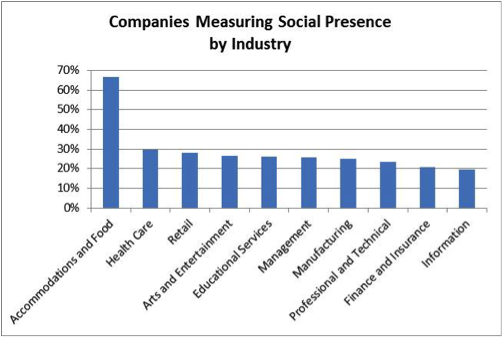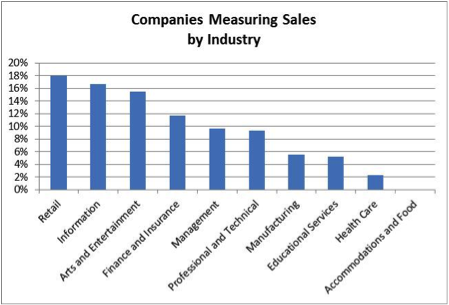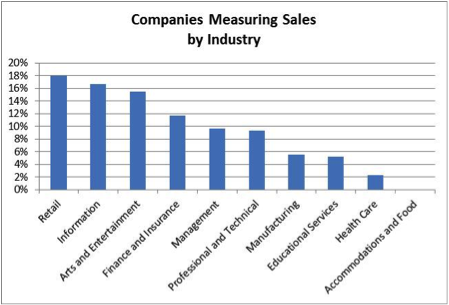Erik Qualman's Blog, page 670
March 5, 2012
Idaho Teen's Death While Texting Hopefully Proves Impetus for Change

[image error]
Vehicle of Taylor Sauer following her accident on Jan. 14.
For 18-year-old Taylor Sauer, one text too many likely proved to be a fatal decision earlier this year.
Now, her grieving parents are speaking out, hoping that their home state of Idaho enacts a law that would outlaw texting while behind the wheel.
During an appearance this week on NBC's TODAY Show, Clay and Shauna Sauer told the story of how their teenage daughter's final moments of life came to an abrupt end.
On Jan. 14 of this year, Taylor Sauer was making the approximate four-hour drive from Utah State University where she was majoring in elementary education to her parents' home in Caldwell, Idaho.
In an effort to perhaps defeat boredom and/or stay awake, Sauer was texting a friend about football on Facebook, her last entry being "I can't discuss this matter now. Driving and facebooking is not safe! Haha."
Moments later, Sauer, who died at the scene, rear-ended a tractor trailer at more than 80 mph that was climbing up a hill. Sauer's Saturn vehicle was then struck from behind by another truck. According to investigators, there was no evidence to suggest that Sauer ever tried to apply her brakes before striking the first truck.
"I think she was probably (texting) to stay awake, she was probably tired," Taylor's dad, Clay Sauer, told The TODAY Show. "But that's not a reason to do it, and the kids think they're invincible. To them, (texting) is not distracting; they're so proficient at texting, that they don't feel it's distracted driving."
With the heartache still fresh in their minds, Clay and Shauna Sauer have gone public with their wish that Idaho officials do something about texting while driving, specifically making texting while driving illegal for anyone behind the wheel. Idaho is presently one of more than 10 states in the U.S. that has no such law on the books.
According to the couple, a state ban on texting and driving is presently being looked at by the Idaho legislature. The ban has already gotten the thumbs up in the state senate, with Idaho's house scheduled to consider the ban too.
While it is too late to save Taylor Sauer, hopefully such enacted legislation could prevent another family from having to go through such grief.
So, do you think all 50 states should have a law in place that makes it illegal for drivers to text, use cell phones or any other forms of phone systems, be they personal or business?
[image error]
March 4, 2012
Six Things You Didn't Know About SMS Marketing

You probably send and receive SMS text messages every day. You also have probably heard about the success of mobile apps and maybe your plans for 2012 include building your own app too. But as a marketer, you may not have considered that SMS is one of the best forms of mobile marketing.
With nearly every mobile phone on Earth capable of receiving a text message, SMS marketing is the only sure way of reaching the pockets of your customers.
1. You can use branded alphanumeric Sender Ids
Just like your branded emails, your SMS marketing messages can appear to your customers with the name or identity of your choosing. This means that when your text arrives on the customer's phone, your name, or location, or handle will appear as the sender, instead of simply a phone number.
Using a custom Sender ID is a great way to get instant recognition for your messages. It is best used for messages that don't require a reply from the customer because the custom sender ID replaces the reply-to phone number.
2. There is Bulk SMS software; just like bulk email
Gathering and managing a database of mobile numbers, SMS campaigns, trigger messages, and unsubscribes is possible using bulk SMS tools from one of the bulk SMS providers.
Just like the email management tools you're used to using, you can fully manage and support a robust list of contact numbers and customer information. Many of these SMS management tools also support API commands, so you can build SMS right into your app, website, game or other software.
3. SMS APIs are available for everyone to use
Businesses large and small are able to tap into the bulk SMS provider's SMS API to provide greater control, functionality and integration with other systems. For example, your website registration form can ask for the customer's mobile number to receive an SMS update when their order is shipped, or to confirm a transaction. Your web developer can easily hook this field to the SMS provider's API allowing you to add the number and opt-in request to your SMS database.
But it's not just businesses that can benefit from using a bulk SMS API. Many people use the tools and API to send low-cost SMS messages to their friends and family overseas where email or other digital communication is either forbidden or impractical.
4. Mobile purchasing is a big deal and getting bigger
If you use Google AdWords for mobile campaigns, you should know that the Google bot now analyses your website to determine its quality score when viewed on a mobile smartphone.
There is now no reason not to optimize your website for mobile. What's more, this past Christmas season and current usage patterns demonstrate that more people than ever are using a mobile device to make purchases. With the right offers, mobile phones make a great tool for impulse purchases as well.
5. Accurate tracking
Most people have multiple email addresses (I currently have 6), so it can be difficult to keep track of a specific person across your lists. By contrast, most people only have one mobile phone number, two at most. This makes it easier to keep track of a particular number and match it to a specific person.
6. Easily blends with social platforms
With bulk SMS API tools, it's easy to blend SMS marketing with social platforms. Promote your SMS programme or offers via your usual social media platforms and encourage your contacts to opt-in to receive value-added SMS messages from your business.
Keep the messages service oriented (such as appointment reminders or vouchers) and honor your customers with relevant SMS messages. Your marketing will never be more personal.
[image error]
March 1, 2012
The State of Social Marketing: Industry Trends in Social Media Measurement

Because there are many ways to quantify the value of social media, marketers continue to struggle with social measurement. Based on the collective response of over 320 marketers reflected in our fist annual report on The State of Social Media Marketing: Top Areas For Social Marketing Investment and Biggest Social Marketing Challenges in 2012, we are starting to see clearly see measurement patterns based on industry, which are driven by the way they define social marketing success. In this blogpost we identify key social measurements that are most popular by industry.
Social Presence
Most industries use social presence (number of fans, likes, followers, etc.) as one of the ways to measure social marketing success. This is especially true among the Accommodations and Food Service industry. This is likely because it is one of the easiest things to measure, even though many have pointed out the limitations of using just this method.

Social Media Lead Generation
Many companies look to measure social marketing efforts based on lead generation results. Professional and Technical Services and the Information industries lead the pack in terms of lead generation measurement with 16 percent and 15 percent respectively. For these industries, online lead generation is a mainstay.

Social Media Impact on Sales
When it comes to measuring social media efforts in terms of impact on sales, the Retail industry is most active, with 18 percent of respondents reporting sales as their key social marketing success measure. With Social Commerce expected to grow to $14 billion in 2015, and an estimated 90% of all purchases subject to social influence, retailers are pushing hard to make the connection between social marketing efforts and the cash register.

As marketers continue to invest in social marketing 2012, they will focus on top three priorities- increased presence across social marketing platforms, increased frequency of content publishing, and robust social marketing management and monitoring. You can read our report highlights here ordownload the full report for free.
Do you think your industry is leading or lagging? Are you planning to add a social media management toolset to your marketing arsenal? Do you need help assessing what would work best for your team? Ask us and we shall answer – in the comment section below, on Twitter (#Awarenessinc), Facebook at Social Media Marketing Best Practices, or LinkedIn via the Social Media Marketing Mavens Group.
Mike Lewis
[image error]
February 29, 2012
Best Cities to Find Design Talent

Are there differences between east coast and west coast designers? What are the best cities to find top graphical designers? Best design schools? View the below Infographic for Designers to discover some startling facts (hat tip Charlie Holbert).

For daily deals for web professionals, check MightyDeals.com
[image error]
February 28, 2012
Five Easy Ways Marketers can take Advantage of Pinterest

So in case you haven't jumped on the bandwagon, just have, or are wondering what all the hype is about, Pinterest is still sizzling. It's a fun and useful tool that brands can use to their advantage in order to show a more visual side to its consumer market.
Now here's what's really important…how to truly capitalize on Pinterest and all it's glory:
1. Integrate with other social networks: Allow your target market to see you on all the places they play. Share your new pins on your Facebook page or Tweet them out. Consumers don't always know you are present on the latest social networks, so the more you promote your presence, the more traffic you may receive, even if just for mere curiousity.
2. Show a more visual side to your brand: Take the time to prepare aesthetically pleasing visual content to share. For example if your brand produces blog posts, such as tech, then make sure the pictures which will direct back to those posts are eye-catching. If your brand has consumer products to share, then ensure the photography behind it is something your target market will want to like, comment on, re-pin, and/or follow.
3. Use instagram: Be creative and use fun photography such as instragram to highlight certain boards. Pinterest focuses on visual beauty; the more you can make your pictures exciting to view, the more engagement you may receive from consumers as well as other brands.
4. Ensure the pins are items people will want to re-pin: When you are pinning your items to the different boards, ensure the link goes to something on your website, blog or other social network. It should help drive traffic to your other brand sites, and additionally be something your consumers will want to share their own followers on Pinterest by re-pinning your content.
5. Marketing Campaigns with Pinterest. Brands can utilize Pinterest (along with Facebook and Twitter) to do creative campaigns which may include…
contests: For example, allowing consumers to create images to be featured on the pinterest page
voting: For example, allowing consumers to vote on their favorite item on a specific board, or picking what other boards they would like featured.
how-to: Feature how-to demos, videos, posts, and other items in order to let consumers get better insight into your service or product.
audience-specific: For example having different boards with content specific to different audience groups. This will allow for more targeting rather than just focusing on one consumer group at a time.
Last but not least, make sure your brand doesn't forget to let the public know you're there. Use the Pinterest widgets for your website and other channels.
Wish List
Although Pinterest has taken off and many brands have already established their presence…there are always improvements that could be made. In my opinion Pinterest would be even more valuable if it had analytics within it for brands to monitor in order to improve their boards and pins. In the mean time brands can focus on the referral traffic through google analytics, which is helpful to know which pins are really of interest to their consumers.
Sources:
http://sproutsocial.com/insights/2012/02/pinterest-marketing/
http://www.socialnomics.net/2012/01/22/five-brands-engaging-like-pros-on-pinterest/
http://www.inc.com/john-brandon/9-tips-boost-your-business-pinterest.html
http://online.wsj.com/article/SB10001424052970204792404577227542820850590.html?mod=googlenews_wsj
[image error]
February 27, 2012
Are Some Social Media Users Losing Their Friendly Side?

[image error]It appears some social networking users are reining in just what information they want out there and who exactly will see it, be it Facebook, Twitter, Google+ and more sites.
According to a report (2011 survey of phone survey of 2,277 adults) Feb. 24 by the Pew Internet & American Life Project, a larger percentage of Facebook users are restricting what information is released about them on the site and decreasing their friend lists, as are social media users across a number of venues.
The report notes that two in three online adults (63 percent) state they presently maintain a profile on a social networking site, a major jump from only 20 percent who indicated they had ever created a profile in 2006.
Among the highlights from the report:
Forty-four percent of those surveyed claim they removed comments from their profile with a social networking site. Two years earlier, 36 percent of people said the same thing;
A larger percentage of users deleted their names from pictures in 2011 than they did in 2009;
Females were much more apt to limit their profiles than their male counterparts. Sixty-seven percent of women orchestrated their profiles so that only their "friends" can view them, while 48 percent of men did likewise;
Younger users were just as likely to utilize privacy controls as their older counterparts, with 62 percent of teens and 58 percent of adults limiting access to their profiles to just friends;
Young adults were more apt than older individuals to remove unwanted remarks. Fifty-six percent of social media users ages 18 to 29 reported removing comments that other individuals have left on their profile, compared with 40 percent of those ages 30 to 49 and 34 percent of people in the 50 to 64 range;
Men are more likely to publish something on social media that they end up regretting. Fifteen percent of men reported they posted something they ended up regretting, while only 8 percent of women said the same;
Whether a result of the influx of new social media users in recent years or to those who are simplifying their online identity management, users have become more apt to maintain a profile on just a single site;
Surprisingly, social media users with the greatest levels of education note the most challenges in managing the privacy controls on their profiles. College graduates are significantly more likely than those with lower levels of education to claim that they experience a degree of difficulty in managing the privacy controls on their profiles.
As the report points highlights, social science researchers have long focused attention on a major disconnect in attitudes and practices around information privacy online. When questioned, people state that privacy is important to them; when observed, their actions seem to note otherwise.
So, as a social media user of one or more sights, where does privacy rank in importance with you?
Photo credit: law.upenn.edu
[image error]
February 25, 2012
NBA All-Star Game 2012: Social Media on Steroids

[image error]
2012 NBA All-Star game in Orlando will feature Kobe Bryant
Although the NBA All-Star game will have a large broadcast audience (215 countries), it is Social Media that will have the enormous reach. For example in China, last year the NBA had 1 million following them on Social Media, this year they already have 41 million (thanks Jeremy Lin!). Putting their total reach on Twitter at roughly 200 million followers. The above stats are courtesy of an article posted on the Orlando Sentinel.
Additionally, there is expected to be huge social 'chatter' during the NBA All-Star weekend events. In particular, the dunk contest, which for the first time will allow fans to vote via Twitter. As opposed to just having them post their own thoughts and phrases (i.e. "boom goes the dynamite"). You can tune into TNT at 8 pm (EST) on Saturday to vote for the Slam Dunk champion by tweeting the hashtag #SpriteSlam with the last name of your favorite dunker. This year, there are no judges for the contest, just the fans who will determine the outcome by tweeting. Fans cans also vote via text message on NBA.com. Technology rules.
Enjoy,
Dr. Dunkenstein
[image error]
NBA All-Star Game 2012: Social Media on Steroids

[image error]
2012 NBA All-Star game in Orlando will feature Kobe Bryant
Although the NBA All-Star game will have a large broadcast audience (215 countries), it is Social Media that will have the enormous reach. For example in China, last year the NBA had 1 million following them on Social Media, this year they already have 41 million (thanks Jeremy Lin!). Putting their total reach on Twitter at roughly 200 million followers. The above stats are courtesy of an article posted on the Orlando Sentinel.
Additionally, there is expected to be huge social 'chatter' during the NBA All-Star weekend events. In particular, the dunk contest, which for the first time will allow fans to vote via Twitter. As opposed to just having them post their own thoughts and phrases (i.e. "boom goes the dynamite"). You can tune into TNT at 8 pm (EST) on Saturday to vote for the Slam Dunk champion by tweeting the hashtag #SpriteSlam with the last name of your favorite dunker. This year, there are no judges for the contest, just the fans who will determine the outcome by tweeting. Fans cans also vote via text message on NBA.com. Technology rules.
Enjoy,
Dr. Dunkenstein
[image error]
February 22, 2012
Super Bowl XLVI Goes Social: Amplifying the Game Experience Online [INFOGRAPHIC]

The Super Bowl XLVI was a social media success thanks to the Indianapolis Super Bowl XLVI Host Committee and team at Raidious, who created and managed the first ever Super Bowl Social Media Command Center. Using the Awareness Social Marketing Hub, our on-demand social marketing management software (SMMS) as the exclusive backbone to their operation, the Host Committee was able to capture the game's excitement via social channels and extend the value of the game online. Forty-six avid social media experts from Indiana worked side-by-side with a staff of 50, including student interns from nearby universities, to make the Super Bowl XLVI a memorable and safe experience. As a result, the Social Media Command Center generated over $3.2 million in value – through amplified social reach and engagement, estimated at 64 million impressions at kickoff alone. Thanks to our friends at Raidious, we bring you the social side of the Super Bowl XLVI as a fun infographic:
If you are interested to learn more about the social muscle behind one of the largest sports events, join us our free webinar "Championship Social Media: Lessons From The Super Bowl XLVI Host Committee Social Media Command Center" on Feb 23 at 2PM EST. Also, stay tuned for an in-depth case study on the Super Bowl XLVI lessons learned and best practices in March.
Have you used social media to manage large events? How did you do it? What lessons did you learn? Share your thoughts in the comment section below, on Twitter (hashtag #Awarenessinc) on Facebook at Social Media Marketing Best Practices, or on LinkedIn at the Social Media Marketing Mavens Group.
Mike Lewis
[image error]
February 21, 2012
2012 Mardi Gras and Fat Tuesday in New Orleans: Different?

[image error]
Mardi Gras and Fat Tuesday must be different given the proliferation of camera phones and social media
Take the omnipresent clicks of camera phones (that basically every American carries), combine that with the fast and massive reach of social media, and you would seemingly have some impacts to the behavior exhibited at the New Orleans Mardi Gras celebration. I imagine their will be plenty of attendees that dabbled on the exhibitionist side of the Fat Tuesday celebration that now awake to find themselves being posted, tweeted and forwarded through the social media world in an unflattering light. Worse yet are the now ubiquitous HD video cameras that are embedded in most phones which leads to an even more robust experience of sight, sound and motion.
It would be interesting to see if these new technological penalties actually deter some of the craziness that happens during the two-week celebration. I would guess that once the King Cake is served and the Hurricanes start flowing, it is probably back to the 'same ole, same ole'. Too bad for the few, good entertainment for the masses…
[image error]
Mardi Gras Fat Tuesday
[image error]



